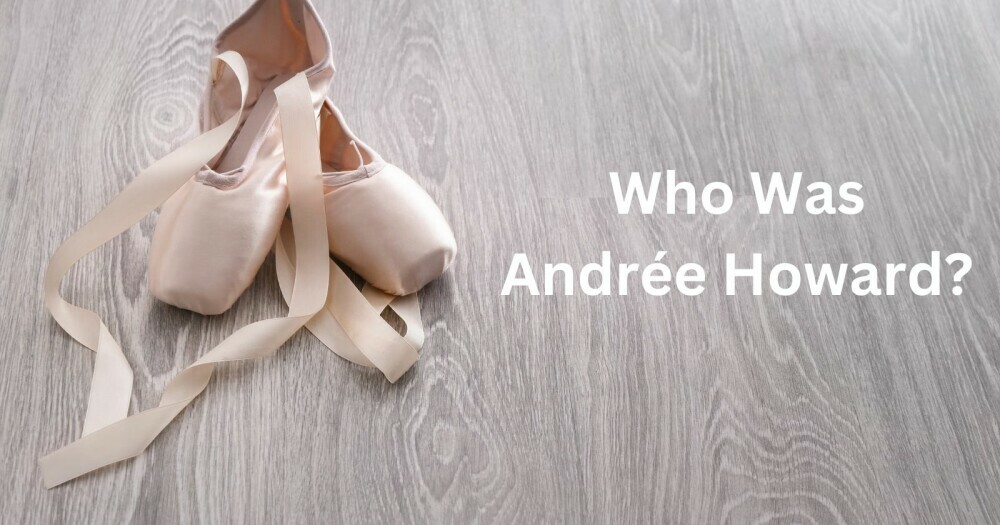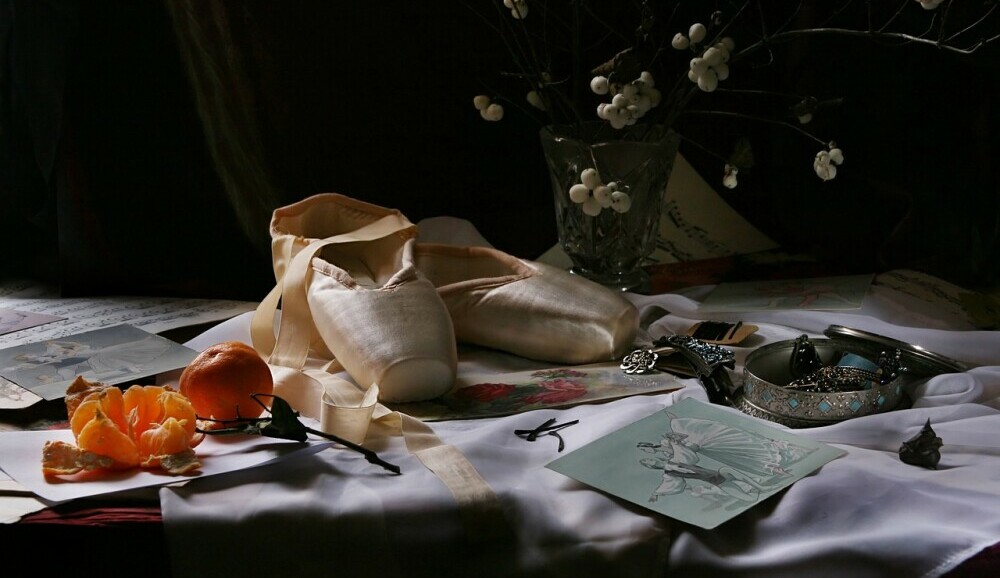Andrée Howard was born in 1910. She was a pupil of Marie Rambert and also studied with the great Russian teachers in Paris; she spent a short time in the de Basil company and danced in early performances of Massine’s Les Presages and made her first attempt at choreography in 1933.
Returning to London and Rambert, she learned her choreographic craft on the tiny stage of the Mercury Theatre.
Those who remember those days with her speak with particular affection of two ballets she made for the beautiful Pearl Argyle: The Mermaid and Cinderella.
She was a gentle and sensitive person, and her work reflected that.

In her early days, she was influenced by the two senior choreographers of the Ballet Club, Ashton, and Tudor, inclining towards Ashton.
Her qualities as an artist resemble his flow of movement, taste, sensitivity, and restraint which is very English in its understatement but which in her case, has led to her worth being much undervalued.
Although she did go on to make some plotless pieces – Assembly Ball, to Bizet’s Symphony in C, and Veneziana, made for Violetta Elvin at Covent Garden – she was mostly drawn to narrative, with a strong emphasis on characterization.
Sadly, almost nothing remains of the 30 or so ballets she created. La Fete Etrange (made for the London Ballet is the best-known and most widely seen, largely thanks to over 200 performances by the touring Royal Ballet company. It was also in the repertory of the Scottish Ballet for a time).
It’s based on an episode in Alain Fournier’s novel Le Grand Meaulnes, but it’s almost all atmosphere rather than action, a very delicately drawn encounter between an adolescent boy and a slightly older girl, inconclusive on her side but shattering her relationship with the man she’s engaged to.
It has a subtle and beautiful decor by Sophie Fedorovitch, and a shifting, haunting score by Gabriel Faure. You come out of it not quite sure exactly what happened but knowing that whatever it was, it changed its characters’ lives forever.
La Fete Etrange Synopsis
On the terrace of a young bride’s castle, young guests in carnival costumes celebrate by dancing and playing in the wintry sunlight.
A country boy wandering in the woods, stumbles upon this world he has never experienced before. The guests welcome him and his happiness mounts to ecstacy when the bride allows him to dance with her.
The gaiety is stilled and the mood changes when the bridegroom arrives. He misunderstands his bride’s kindness to the boy and leaves her despite the pleading of all the guests.
The unhappy boy tries to console the bride, but she turns from him and goes into the castle.
As evening falls the boy who so unwittingly caused the tragedy retraces his steps alone through the woods.
Unfortunately, this lovely piece dropped out of the repertoire of the ‘other’ Royal Ballet a long time ago, and it was last seen in a very unsatisfactory revival by the London company in 2005. Badly lit with a misguided cast, it can’t have convinced anybody coming new to it.
Monica Mason has said that she is determined to get it right before she retires, and I hope she holds herself to that promise: otherwise the last memory of a Howard ballet will be a very unhappy one.
Other Ballets Done By Andrée Howard
Our Lady’s Juggler showed at once an ability to sustain the mood and create an atmosphere with a remarkable economy of movement, which remained her strength.
Of the rest of her output, two of the most fascinating were adaptations of stories by David Garnett: Lady into Fox (1939) and The Sailor’s Return (1947).
Lady into Fox tells of a young married woman whose happiness is destroyed by the pain of seeing a hunted fox; she changes, literally, into a wild vixen who has to seek her freedom.
The ballet was originally planned by Antony Tudor; Howard took it over when he abandoned it, intending to dance the leading role herself, but she eventually decided she was too tired to do it properly and gave the part to the 17-year-old and unknown Sally Gilmour, whose astonishingly convincing performance launched her into stardom.

David Garnett himself said that she revealed to him just what his heroine was. Howard did eventually dance the role herself when the ballet was given by ABT in 1940.
The Sailor’s Return was Britain’s first multi-act ballet and had a theme that would still – sadly – resonate today. The sailor hero (played by Walter Gore) marries an African princess and brings her home to England, where race hatred gradually destroys her.
It gave Sally Gilmour another fine role, as well as providing several clever cameos, one of them for the young John Gilpin as the Rabbit Catcher. Howard designed the sets and costumes herself, as she often did for her works.
Andrée Howard’s Death and the Maiden remained a classic of the Rambert Repertory for over twenty years after its first performance in 1937, while the enormous popularity of La Fete Etrange (above), which contained so many of her best qualities, indicates better than anything else the appeal of her work.
It retains an honored place in the repertories of both the Sadler’s Wells Royal Ballet and the Scottish Ballet.
Andrée Howard died of an overdose taken while she was suffering from depression, in 1968.


Hi Michel,
Thank you for sharing this comprehensive overview of Andrée Howard’s life and work. Her contributions to narrative ballet and her unique choreographic style are truly fascinating. It’s interesting to reflect on how her sensitive and expressive approach set her apart in the dance world. I’d love to hear your thoughts on how her influence can be seen in contemporary ballet. Are there specific choreographers today who you think have been inspired by Howard’s work?
Thanks again
I can’t answer you Alice, as I have not personally seen any of her works, and you can’t even find them on the internet, but I understand her works were more balletic than contemporary.
I just had the pleasure of diving into this fascinating article about Andrée Howard, and I have to say, it’s given me a whole new appreciation for her contributions to the world of ballet. What struck me the most is how her gentle and sensitive nature was beautifully reflected in her work. The ballets she created for Pearl Argyle, like “The Mermaid” and “Cinderella,” must have been truly enchanting.
Reading this article has truly enriched my understanding of Howard’s work and the subtle yet powerful ways she influenced the dance world. Thank you for sharing such an insightful and detailed piece on Andrée Howard. It’s inspired me to explore more of her work and appreciate the profound sensitivity she brought to ballet.
Thanks for stopping by Kavitha. It is always good to see that people ar finding these articles interesting, especially the historical ones.
What a beautifully detailed post on Andrée Howard, Michel. It’s fascinating to see how Howard’s gentle and sensitive nature shone through her choreography, creating works that are still remembered with affection today. Her ability to convey deep emotion and atmosphere with such economy of movement is truly remarkable. The synopsis of “La Fête Étrange” particularly captured my imagination, highlighting her talent for creating haunting and life-altering narratives. It’s a poignant reminder of her lasting impact on ballet, despite the tragic loss of many of her works. Thank you for shedding light on such an influential yet often overlooked artist.
– Scott